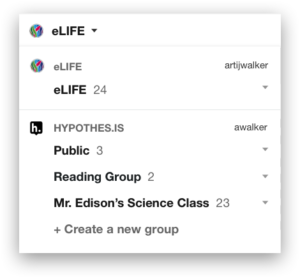A New Annotation Capability: Publisher Groups
 Today we’re announcing the availability of a powerful new configuration for annotation groups we call “publisher groups”.
Today we’re announcing the availability of a powerful new configuration for annotation groups we call “publisher groups”.
Now publishers can establish and manage a default branded and moderated annotation layer on their online publications to increase reader engagement, enhance content, and focus attention on the version of record. Publishers can use this new capability to showcase annotations created by specific groups — like all their registered users or a select group of invited authors and experts — or devote an annotation layer to facilitate moderated reader collaboration.
Publishers we’ve talked to have long been looking for a way to enable their readers, authors, reviewers, and editors to have quality conversations directly in published works without the problems generated by comment threads at the bottom of documents, untethered to the text they address. As a part of our collaboration with eLife, we developed this new configuration specifically to enable publishers to offer their communities a better way to participate in valuable discussion directly in publications of record.

The key characteristics of publisher groups include:
- Publishers can offer a branded default annotation layer on their website or platform.
- Publishers decide who can create annotations and who can read or reply to them.
- Annotations can be moderated by group admins.
- Group membership can be integrated with a publisher’s existing user account system, requiring no separate login for group members.
The addition of publisher group configuration to the user-created private groups Hypothesis already supports is part of our continuing work to enable an even wider variety of annotation group configurations to meet the needs of diverse stakeholders. Publishers and website owners who want to enable a publisher group should contact Hypothesis to talk about the process to create, manage, and support a group.